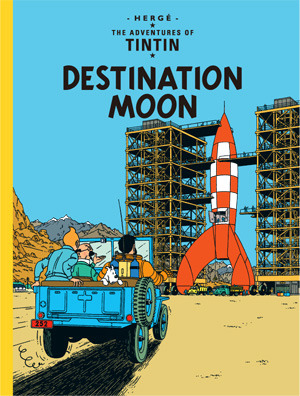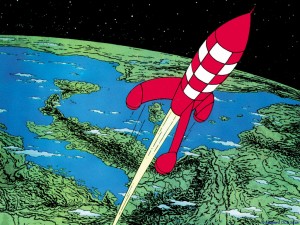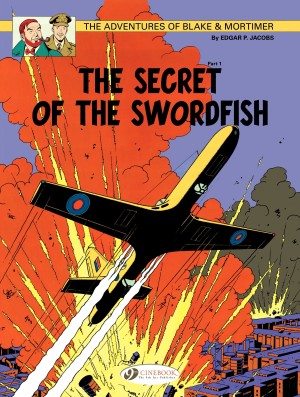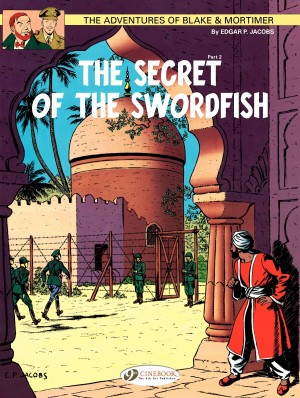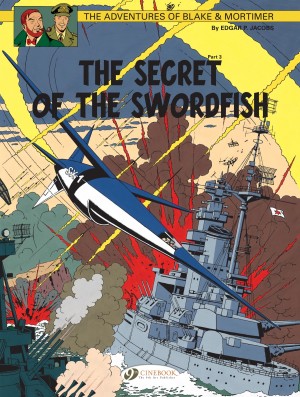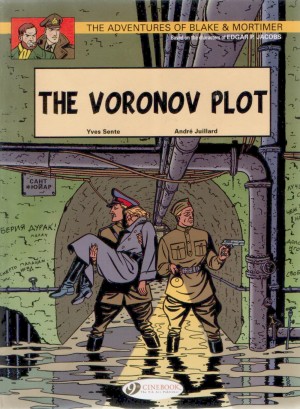Review by Roy Boyd
Destination Moon begins one of three Tintin adventures to be split over two books, with the conclusion in Explorers on the Moon. Many Tintin experts rightly consider this a masterpiece, with criticisms focusing on it resembling a documentary in places. However, to criticise this book, and its companion volume, for being too realistic is to do the story a massive disservice. Produced for the Tintin magazine in 1950, nineteen years before man set foot on the moon, this tale is remarkably prescient, a result of the thorough and meticulous research that Hergé carried over into the most science fictional adventure of the series.
Tintin and Captain Haddock briefly return home to Marlinspike Hall, one assumes from their adventures in Land of Black Gold, only to receive a telegram from Professor Calculus asking them to join him in Syldavia. On arrival, they are picked up and fear they are being arrested or kidnapped by the secret police, Tintin’s normal mode of entry when visiting any country.
They’re not, Hergé is merely having fun subverting the expectations of both characters and reader, and Tintin, Haddock, Calculus, engineer Frank Wolff and Snowy are soon involved in lengthy and intense preparations for a rocket trip to the moon. However, the book is much more than just speculation about what preparations for a moon launch might be like, and it doesn’t stint on plot.
Enemy spies parachuting in under cover of darkness, sabotaged rockets, snipers, a mole within the organisation, and Professor Calculus temporarily losing his memory: Tintin and Co encounter all manner of distractions to while away the many months they spend preparing for the launch.
There is a great deal of science, and Hergé uses comedy, often slapstick, to lighten the lengthy technical explanations spread throughout the book and interspersed with all sorts of Spy vs Spy goings on. The documentary style, while lending authenticity, has a bearing on some aspects of the story, like pacing. Full of “a few days later”, “a fortnight later”, and even one “a few months later”, this is undeniably slower than any other Tintin adventure.
Bob de Moor, who came on board at this time to ease Hergé’s crippling workload, was to draw the lunar landscapes, outer space and the rocket, and much of the background material. A scale-model of the rocket (based upon Wernher von Braun’s V-2) was built, and it could be taken apart to allow the artist to accurately depict any scene set inside the ship.
One would expect, given the subject matter, that this book would be more dated than other Tintin stories, but this is where all the research really pays off, with a story that still feels contemporary. One of the great Tintin adventures.
